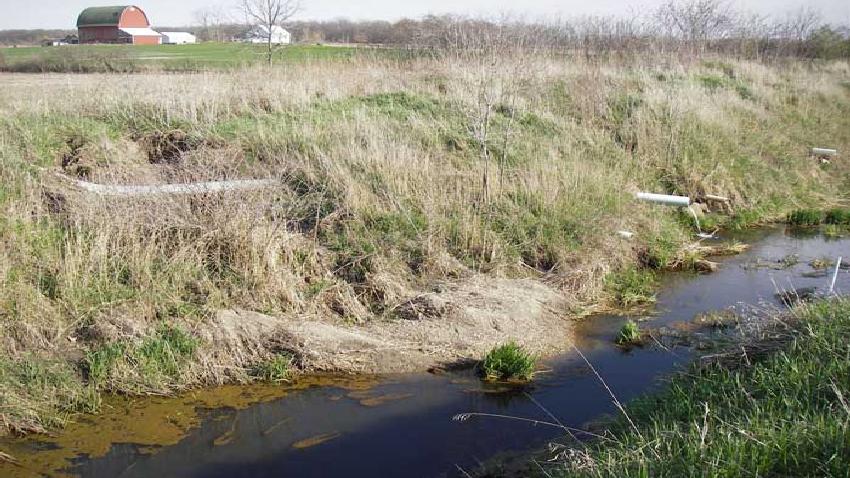ASA: Drainage Tiles A Big Part Of Phosphorus Problem

In this photo by Douglas R. Smith, water draining from a farm field via below ground pipes, or tile, discharges directly into a ditch.
It’s been largely ignored in the past as a route for phosphorus loss from farms, but the buried network of drainage pipes known as the tile system can carry away as much phosphorus as surface runoff, reports Madeline Fisher of the American Society of Agronomy.
That’s the conclusion of a pair of studies published in the Journal of Environmental Quality today (Oct. 3). In research in Ohio and Indiana led by USDA-ARS scientists, nearly 50% on average of both dissolved, “bioavailable” phosphorus and total phosphorus left fields via the tile system—a percentage much higher than previously thought.
While the findings are troubling, they also suggest that curbing subsurface phosphorus transport could reap huge water quality rewards for water bodies like Lake Erie beset by phosphorus pollution. At least 40% of farmlands are tiled today across the U.S. Midwest, where subsurface drainage remains a necessity, says Kevin King, a USDA-ARS researcher in Ohio who led one of the studies.
“If we don’t have tile drainage, we cannot farm in this landscape,” he says. “So what we have to do is figure out how to work with it.”
The research is especially relevant to Ohio, Indiana, and Michigan, where movement of dissolved phosphorus from farms to waterways has been helping feed nuisance algal blooms in Lake Erie. These include a record-breaking but mostly harmless bloom in 2011, and the smaller, toxic bloom that contaminated the city of Toledo’s drinking water supply in early August.
Continue to the American Society of Agronomy site for the full story.






